Traditional Poster
Imaging & Biomarkers in Brain Tumors
ISMRM & ISMRT Annual Meeting & Exhibition • 10-15 May 2025 • Honolulu, Hawai'i

 |
5008. Analysis
of volume, T2, perfusion, and diffusion in supratentorial
meningioma and peritumoral edema before and after preoperative
embolization
L. Li, T. Miyati, N. Ohno, M. Sakai, S. Kinoshita, H. Kasai,
A. Kitao, H. Yamada, M. Mase
Division of Health Sciences, Graduate School of Medical Sciences, Kanazawa University, Kanazawa, Japan
Impact:
We assessed changes in volume and other MRI-derived parameters (T2, FD*, D, and delta-D) in supratentorial meningioma in the short term after endovascular embolization. |
|
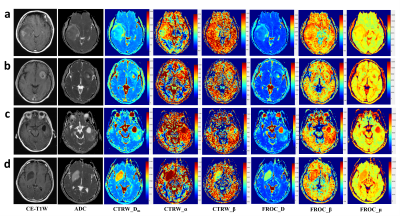 |
5009. Continuous-time
random walk and fractional order calculus models histogram
analysis of glioma biomarkers on differentiation
Y. Ding, X. Zhang, W. Zhu
Tongji Hospital Tongji Medical College of HUST, Wuhan, China
Impact: The CTRW and FROC models have the potential to
preoperatively discriminate different molecular
subtypes (IDH1, ATRX, MGMT, and TERT) in diffuse gliomas,
which can help clinical physicians in treatment selection
and prognostic assessment for glioma patients.
|
|
| 5010. WITHDRAWN | ||
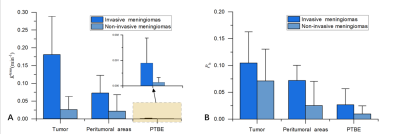 |
5011. Investigating
microvascular permeability of peritumoral edema in meningioma
brain invasion based on DCE-MRI
J. Zhang, Q. Feng, C. Zhang, T. Ma, S. Diao, D. Liu, X.
Zhang, T. Han
Tianjin Huanhu Hospital, Tianjin, China
Impact: This technology holds promise for enabling
non-invasive predictions regarding the occurrence of brain
invasion in meningioma patients.
|
|
 |
5012. 3D
magnetic resonance fingerprinting in preoperative prediction of
glioma grade and ki67 increment index
L. Wang, Y. Wu, W. Wei, X. Liu, Y. Bai, M. Wang
Department of Radiology, the People’s Hospital of Henan University, Zhengzhou City, Henan Province, China
Impact: This study is helpful to predict preoperative
grade of glioma and ki67 increment coefficient, and to
improve the accuracy of diagnosis to some extent.
|
|
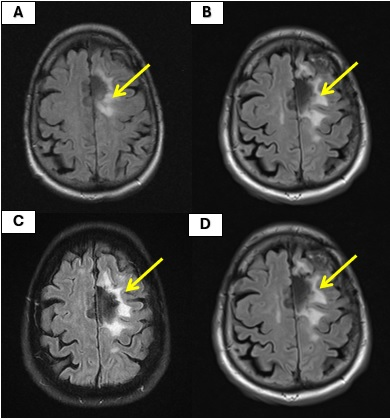 |
5013. Inter-Rater
Reliability of RANO2 Criteria in Assessing Tumor Response in
Low-Grade Gliomas Treated With and Without Radiation
P. Arjmand, G. Hooper, W. Malak, Y. Sun, R. Ghotra, S.
Gongala, H. Newton, P. Vempati, H. Perlow, T. Hodges, C.
Badve
University Hospitals Cleveland Medical Center, Cleveland, United States
Impact: This research highlights the challenges of
implementing RANO2 criteria in post-treatment LGG
monitoring. The lower IRR in the post-radiation setting and
lower accuracy in the absence of baseline scans emphasize
the need for an alternative imaging approach beyond RANO2.
|
|
| 5014. WITHDRAWN | ||
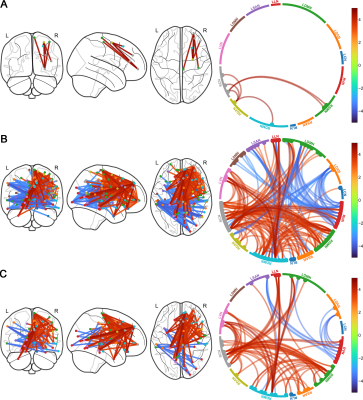 |
5015. Structural
disconnection-based prediction of overall survival in
glioblastoma and their transcriptional associations
N. Shen, Y. Li, H. Zhu, Y. Ding, J. Zhang, L. Li, W. Zhu
Tongji hospital, Wuhan, China
Impact: This research advances the field by linking
structural brain disconnections to survival outcomes in
glioblastoma, paving the way for personalized treatment
strategies. Additionally, it underscores the importance of
integrating imaging and molecular data, driving future
investigations into targeted therapies.
|
|
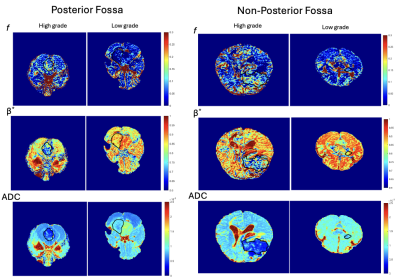 |
5016. Performance
Comparison of Advanced DWI Parameters in Grading Pediatric Brain
Tumors by Tumor Type and Location
A. Yen, C. Hentea, M. Karaman, X. Zhou
University of Illinois Chicago, Chicago, United States
Impact: Our findings suggest that advanced DWI models
enhance diagnostic accuracy in the posterior fossa. Further
studies should explore clinical applications of these
models, leveraging their ability to assess key tissue
properties such as cellularity, vascularity, and
heterogeneity.
|
|
 |
5017. Differentiation
of high-grade glioma from brain metastasis based on multiple
parametric (MTP) synthetic sequence in the peritumoral edema
J. Sun, Y. Bao, Y. Miao
The First Affiliated Hospital of Dalian Medical University, Dalian, China
Impact: Based on MTP, multiple parameters that reflect
the characteristics of brain tumor tissue can be obtained in
a short period of time. The difference in tumor composition
between gliomas and metastases leads to differences in T1
and T2 * values.
|
|
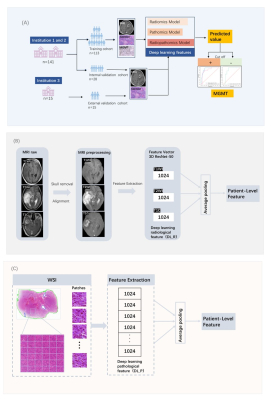 |
5018. Cross-scale
prediction of glioblastoma MGMT methylation status based on deep
learning combined with MRI and pathology images
X. Wu, Y. Xi, H. Yin
Xi'an People's Hospital (Xi'an Fourth Hospital), Xi'an, China
Impact: This research provides a method for therapeutic
decision-making and prognostic prediction in glioblastoma,
offering a potential approach for the future integration of
multi-information for accurate prediction and clinical
application in other tumors.
|
|
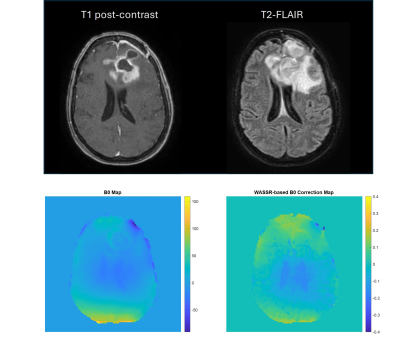 |
5019. Chemical
Exchange Saturation Transfer Imaging in Human Glioma at 7T
Y. Lan, E. Noch, T. Patel, A. Henning
University of Texas Southwestern Medical Center, Dallas, United States
Impact: In
combination with the clinical anatomical images, acquiring
CEST data for glioma patients at 7T is beneficial for the
monitoring of tumor progression and the evaluation of
treatment response.
|
|
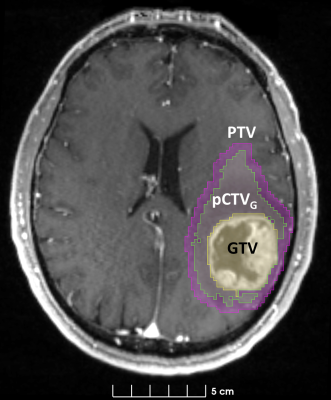 |
5020. Biological
Target Volume and Tumor Spread Index: A Combined Approach for
Advanced Radiotherapy Targeting in Glioblastoma
P. Abbasian, L. Ryner, B. McCurdy, S. Kakumanu, N.
Venugopal, J. Guan, M. Pitz
University of Manitoba, Winnipeg, Canada
Impact: Integration of TSI and BTV into GBM radiotherapy
planning enhances tumor targeting by accounting for white
matter infiltration and biological abnormalities. This
personalized approach reduces unnecessary radiation to
healthy tissue, improves treatment accuracy, and may lead to
better patient outcomes.
|
|
 |
5021. Clinically
Available Prediction Models for IDH and ATRX Gene Status in
Adult-type Diffuse Gliomas Based on VASARI Features
L. yanhua
Chinese People's Liberation Army(PLA) general hospital, Beijing, China
Impact: Identifying IDH mutation and ATRX mutation
status based on VASARI features is helpful for glioma risk
stratification.
|
|
 |
5022. Accessing
3D arterial spin labeling for evaluating pathological grade and
immunohistochemical biomarkers expression in adult gliomas
A. Rayamajhi, Z. Gao, Q. Zhang, N. Xv, G. Han
The Second Affiliated Hospital Of Xi'an Jiaotong University, Xi'an, China
Impact: The variations in relative tumor blood flow
values observed in this study may serve as potential
biomarkers of glioma grade, thereby aiding in the selection
of appropriate treatment strategies and prognostication for
glioma patients.
|
|
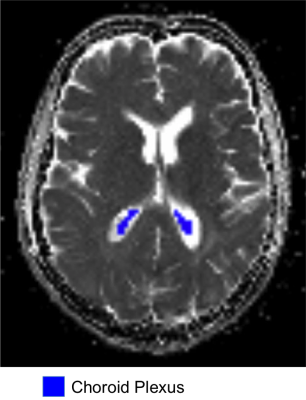 |
5023. Apparent
diffusion coefficient values are increased in the Choroid Plexus
following chemotherapy
A. Hohmann, K. Zhang, J. Jende, M. Bendszus, F. Kurz
University Hospital Heidelberg, Heidelberg, Germany
Impact: ADC values in the choroid plexus are higher
after chemotherapy, with more cycles of chemotherapy
associated with higher ADC. These results are particularly
relevant to future clinical application, such as monitoring
of chemotherapy side effects, and estimation of long-term
toxicity.
|
|
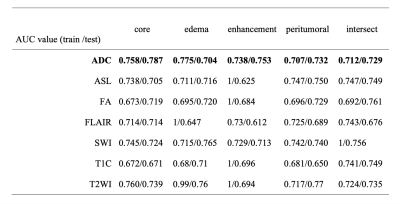 |
5024. Evaluation
of GBM prognosis based on different tumor components and
functional MRI.
X. Su, Q. Yue
West China Hospital of Sichuan University, Chengdu, China
Impact: Our study further indicates that the ADC value,
derived from DWI, along with the core area of the tumor,
offers crucial information for evaluating the prediction of
survival in GBM patients.
|
|
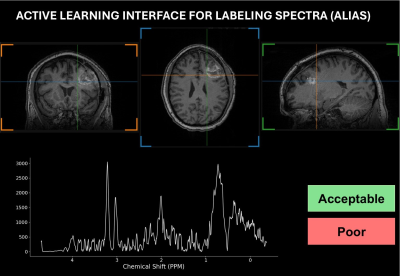 |
5025. Development
of an Automated Tumor Spectral Artifact Removal Algorithm Using
Active Learning
A. Rejimon, K. Ramesh, A. Guiffrida, B. Soher, S. Sheriff,
A. Maudsley, P. Barker, E. Mellon, B. Weinberg, L. Cooper,
H. Shim
Emory University School of Medicine, Atlanta, United States
Impact: Our active learning-based model streamlines
expert annotation for artifact filtration in tumor spectra,
optimizing radiation therapy planning in glioblastoma. This
approach accelerates data labeling, paving the way toward
improved spectral quality assessment for clinical
spectroscopic MRI applications.
|
|
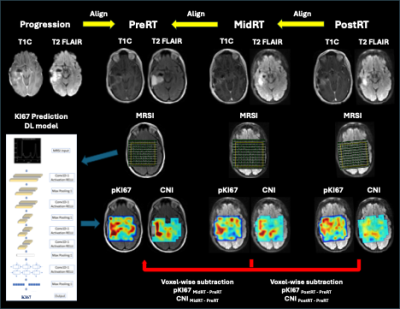 |
5026. Longitudinal
voxel-wise analysis using a novel deep-learning-derived KI-67
map for early prediction of glioblastoma outcome
N. Tran, T. Luks, J. Ellison, Y. Li, A. Molinaro, D. Nair,
A. Jakary, H. Kukreja, S. Varizi, B. Liu, O. Adegbite, J.
Villanueva-Meyer, N. Butowski, J. Clarke, S. Chang, H. Lin,
J. Lupo
University of California, San Francisco, San Francisco, United States
Impact: Novel imaging-based proliferation maps and
voxel-wise analyses show much stronger correlation with
progression-free and overall-survival and regions of
subsequent progression compared to conventional
imaging-markers. These features can potentially aid in early
prediction of response, and outcome of patients with GBM.
|
|
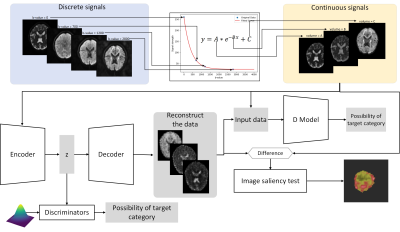 |
5027. Multi-scale
convolutional adversarial autoencoder-based anomaly detector for
lesion edge localization on diffusion MRI
S. Cao, T. Wang, Q. You, Y. He, J. Qin, Y. Wu
Nanjing University of Science and Technology, Nanjing, China
Impact: In this paper, we utilized dMRI features to
identify tumors by analyzing the abnormal signals of
microscopic water molecules. To address the challenge of
irregular tumor margins, we proposed a method for detecting
the abnormal probability of brain tissue.
|
The International Society for Magnetic Resonance in Medicine is accredited by the Accreditation Council for Continuing Medical Education to provide continuing medical education for physicians.